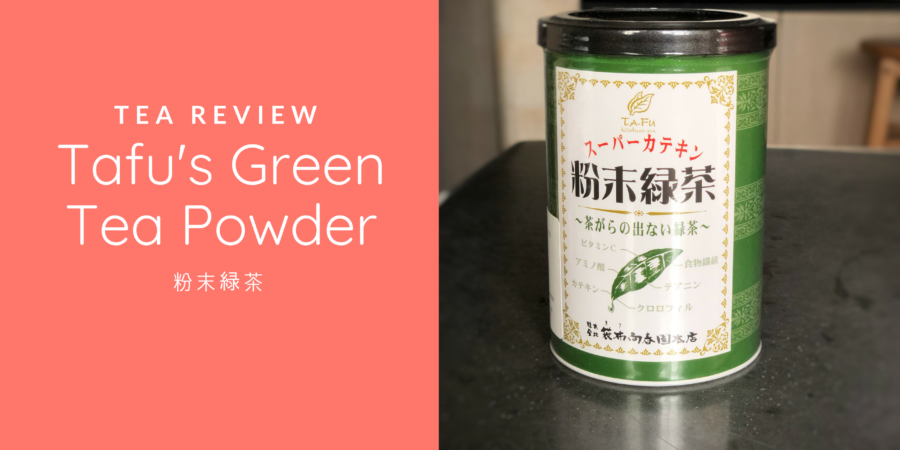Here’s another tea that I got from the Dayre Tea Exchange! I may have to go slow on the new teas after this because it seems like my gastric is back. Oh well, I had a good few weeks run of daily teas.
This green tea is from Tafu and for some reason, I can’t find the exact product page. I was also planning to talk about the history of the tea, since I talked about the different types the last time I tried something like this, but googling in Japanese didn’t give me any useful information. I did, however, find this interesting fact from the 日本茶のすべてがわかる本: 粉茶 (which is supposed to be a bit different from this 粉末茶) is a by-product of the tea making process. Another by-product is kukicha/boucha (茎茶・棒茶) and collectively, these products are called 出物 (demono). If you think about it, this is actually a pretty brilliant way to make sure nothing gets left behind – I just wish I could find out who discovered this and when.
Also, I think it’s pretty interesting that now, people have started touting the health benefits of both 茎茶 (kukicha) and 粉茶 (konacha), what with the low caffeine (kukicha) and being able to drink the whole leave (funmatsu and/or konacha). It’s another thing I’d like to know: did they find popularity and then get branded as healthy or was it the other way round?
Tea Review

The tea powder is a pretty bright green. It comes with a small spoon and I used that to make one cup of tea:

The tea liquor was a very murky dark green and had very prominent, grassy notes. It wasn’t extremely bitter, but I could definitely taste the bitterness. Strangely, I also found it a little sweet and earthy too. I made this according to the recommended concentrations, but found it too strong – I had to dilute it a bit more to get it just right. I did notice that the bitterness goes away when you dilute it, but the earthy taste (which is more of an aftertaste) is still there.
I also tried adding this to milk. It doesn’t work at all when you add it to cold milk, unlike the taberu ryokucha, but it does work with warm milk, or with milk added to the tea. The milk actually works well with this tea and you get the grassy and sweet notes without any of the bitterness or earthiness. For the first time, I actually prefer this with milk rather than water.
Brewing Recommendations
Mix 1 spoon (about 0.5g) with 100 ml of water (personally, I would use more).
The can also says you can mix it with nihonshu, whisky, etc., although I definitely haven’t tried that.
Personally, I would mix this with milk to make a green tea milk tea. I’ve also used this to make green tea mochi muffins and Dalgona green tea!

Is this green tea powder matcha? Or are you saying this powder is some kind of by-product in your mjjcs
This is not matcha (which has its own way of being made) – this is green tea which has been ground into powder
I bought this at local oriental market. It tastes good to me. I have tries over 100 different types of Japanese green tea in the past 40 years. There is no english on the labeling and I am trying to find out what variety is this ? Sencha,Gyokuro, or what ? Thank you for any information.
Hi Keith, unfortunately I don’t know what the base tea was. I found the company website but it looks like this was made for export so they didn’t have any details in the product page. Here’s the website link if you’d like to check out Tafu: http://tafutafu.com/product/
I bought the same tea and I find it to be smooth and no over powering in flavor. Is this good quality tea . And does it have metals that I should be concerned bout ?
Hi Marta, I’m not sure about the metals because I’ve long finished my can of the tea, but I suspect because powdered tea is a byproduct of tea making, the quality of the leaves used would be lower than that for matcha/gyokuro/high quality sencha. But this is just a hunch, it could differ based on the maker!
Is this Koshun -en sencha tea ?